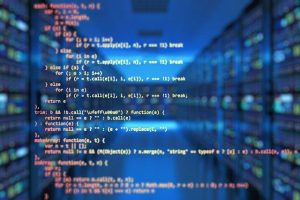Quantum News Briefs June 27: Canada building quantum powerhouse, Data center accelerators integrating quantum computing, NSA on post-quantum encryption standards & MORE

Quantum News Briefs opens today with an update featuring Canada’s support and financing of quantum technology in its bid to become a quantum powerhouse, followed by a global look at the integration of quantum computing into the high-performance computing ecosystem. An update on the NSA and its “no back doors” pledge into the NIST’s post-quantum encryption efforts along with a new announcement from Crown Sterling concerning its new patent and first layer 1 blockchain to implement One-Time Pad’s quantum-resistant cryptography and MORE are also in today’s briefs.
Canada Lays the Groundwork to Become a Powerhouse in Quantum Technology
 The Canadian government has made a series of strategic investments intended to make Canada a go-to place for quantum research and investment. Canada already has 23 startup quantum technology companies, second only to the US with 59. It also is among the top 10 countries worldwide in planned public funding for quantum technology at more than $600 million, a number that is growing but still behind China with $15 billion, the EU with $7.2 billion and the US with $1.3 billion.
The Canadian government has made a series of strategic investments intended to make Canada a go-to place for quantum research and investment. Canada already has 23 startup quantum technology companies, second only to the US with 59. It also is among the top 10 countries worldwide in planned public funding for quantum technology at more than $600 million, a number that is growing but still behind China with $15 billion, the EU with $7.2 billion and the US with $1.3 billion.
The total economic impact of quantum technologies in Canada is expected to reach C$533 million ($411.2 million) with 1,100 jobs by 2025, according to a study by the National Research Council of Canada (NRC). In 2045, the NRC estimated that number will reach almost C$139 billion, with more than 209,000 jobs.
The economic development agency FedDev Ontario said this week that it will award more than C$23 million over six years to help businesses advance and commercialise quantum technologies as a step to advance the National Quantum strategy programme in southern Ontario. It will accept applications until 20 September.
Phil Kaye, programme director of the Applied Quantum Computing Challenge at NRC, said the National Quantum strategy reflects academics and the commercial community working closely together.
Kaye said Canada had an early foothold in quantum technology because of work at its academic institutions. The complete discussion of Canada and quantum technology is found here at ScienceBusiness
*****
The First Frontier for Quantum: Data Center Accelerators
 Governments, supercomputing labs and companies are examining how quantum processing units, also called QPUs, could fit into high-performance computing environments. Francisco Pires of Tom’s Hardware provides examples from around the world.
Governments, supercomputing labs and companies are examining how quantum processing units, also called QPUs, could fit into high-performance computing environments. Francisco Pires of Tom’s Hardware provides examples from around the world.
Pawsey’s Supercomputing Research Centre in Australia has claimed the world’s first installation of a Quantum Computing Processor (QPU) in an HPC-first environment. Based on Quantum Brilliance’s diamond-based qubits, the partnership has been strategized to supercharge the pairing of quantum and classical systems through a hybrid research environment.
In Munich, Germany, the Leibniz Supercomputing Centre already has a quantum computing hub that’s focused on creating the algorithms and tools that can bridge the quantum and classical realms via its Future Computing initiative. The hub is currently integrating one of AI accelerator’s darlings, Cerebras’ Wafer Scale Engine (CS-2). The UK government has recently also dipped its institutional toes in the world of quantum, acquiring a photonics-based quantum computing system from Orca Computing.
Phillipe Notton, CEO of SiPearl, envisions the future of QPUs as co-processors to the CPU and GPU accelerators of classical computing. The France-based company stands as one of the leading chipmakers for European exascale systems and is currently developing its Arm-based Rhea CPUs for integration as early as 2023
It’ll take long development times until mainstream quantum computing solutions are made available – and some might never be – in an off-the-shelf manner. Until then, HPC centers’ secure, leading-edge infrastructure, cooling, and power delivery designs stand as essential elements towards enabling and democratizing access to quantum computing.
*****
Crown Sterling Announces Issuance of US Patent for Novel Cryptographic Key Compression
Crown Sterling Limited LLC, provider of quantum-resistant encryption and compression technologies, announced that the United States Patent and Trademark Office has issued US Patent 11,310,042 B2 (Inventor: Robert Edward Grant), covering a development in the data and information security field, Methods of Storing and Distributing Large Keys.
Robert E. Grant, Founder and CEO of Crown Sterling commented, “We were very pleased with how rapidly this seminal patent was issued by the US Patent Trademark Office. This is the first of many new patents that are linked to our innovations in both cryptography and compression. The Crown Sterling Chain is the world’s first layer 1 blockchain to implement One-Time Pad’s quantum-resistant cryptography.”
One-Time Pad is an information theory-based encryption method that does not depend on assumptions about the computational resources of an attacker (and therefore is quantum-resistant), in contrast to conventional encryption protocols relying on prime numbers and number theory. This novel method of compressing large keys allows for practical and scalable implementation of One-Time Pad encryption in combination with blockchain technology.
*****
NSA Assistance with Encryption Project Raises Questions
 The National Security Agency is assisting with an effort to define a new encryption standard that’s unbreakable by the quantum computers of the future, and the agency has promised it won’t build secret vulnerabilities into the standard.
The National Security Agency is assisting with an effort to define a new encryption standard that’s unbreakable by the quantum computers of the future, and the agency has promised it won’t build secret vulnerabilities into the standard.
The NSA has worked with the National Institute of Standards and Technology to create a post-quantum encryption standard. Rob Joyce, the NSA’s director of cybersecurity, told Bloomberg News in May that there “are no back doors.”
Grant Gross examines those statements and security community’s follow-up comments in his article in Washington Examiner. Joyce’s comments raised some eyebrows in the cybersecurity community, given that a back door would benefit the NSA’s work to monitor communications of terrorism suspects and other targets.
NIST began focusing on encryption that is resistant to quantum computers in 2016 by asking researchers to submit ideas for new encryption algorithms. An NSA spokeswoman declined to comment on NSA’s work with NIST on the quantum computing standard or expand on Joyce’s comments about back doors.
With the public vetting of the encryption algorithms submitted to NIST, it will be difficult to embed back doors in any standards the agency approves, some cybersecurity experts said.
“Back doors are only possible when you are obscuring things,” said Vince Berk, the chief revenue and strategy officer at Quantum Xchange, a cybersecurity vendor focused on encryption. “Crypto algorithms are just that — algorithms. [Encryption] implementations can be made by anyone, and that is usually when the back doors go on.”
*****
Does Australia’s ‘Remarkable’ Advancement in Quantum Technology Mean Crypto Encryption May Be Breached Sooner than Expected?
 In October 2021, U.S. intelligence officials identified quantum computing as one of the five most significant foreign threats. The last four were artificial intelligence, autonomous systems, and biotechnology.
In October 2021, U.S. intelligence officials identified quantum computing as one of the five most significant foreign threats. The last four were artificial intelligence, autonomous systems, and biotechnology.
Numerous scientists warn that quantum computers may be able to break the cryptographic encryption that safeguards smartphones, bank accounts, email accounts, and crypto wallets. LocalBitcoins, a peer-to-peer Bitcoin exchange network, speculated that quantum computers could breach the encryption methods that protect Bitcoin and other cryptocurrencies.
The Australian quantum computing startup Silicon Quantum Computing revealed Friday that it has constructed the world’s first atomic-scale integrated circuit that will power a new breed of computing machines. While that’s an impressive feat by computer scientists from down under Sydney, its development was a remarkable two years ahead of schedule. According to Simmons, their invention might be commercialized in around five years. Read Inside Quantum Technology’s coverage of Silicon Quantum Computing’s creation of the world’s first integrated quantum computer circuit.
*****
Sandra K. Helsel, Ph.D. has been researching and reporting on frontier technologies since 1990. She has her Ph.D. from the University of Arizona.





















